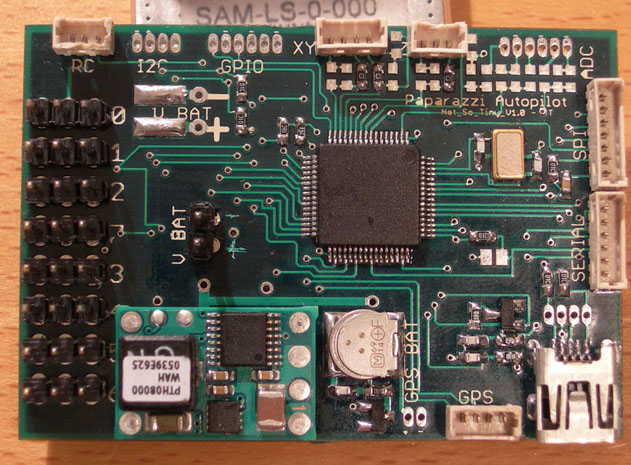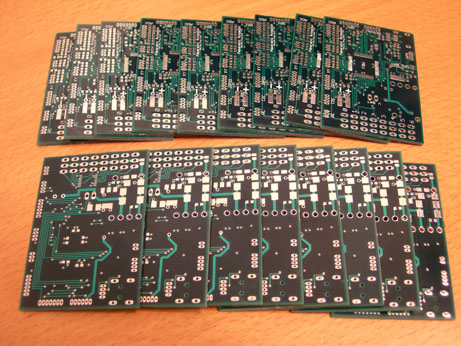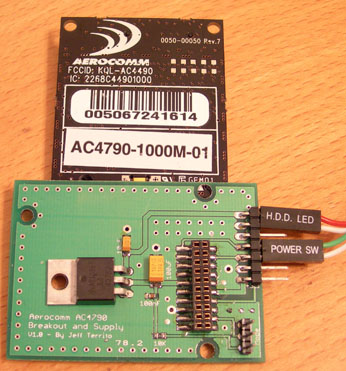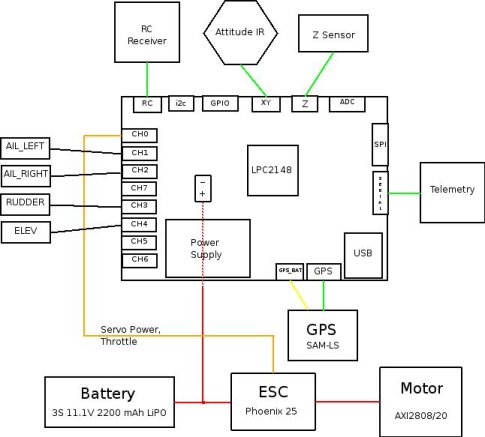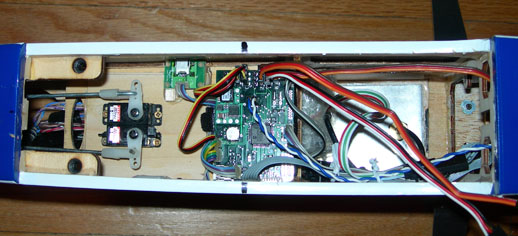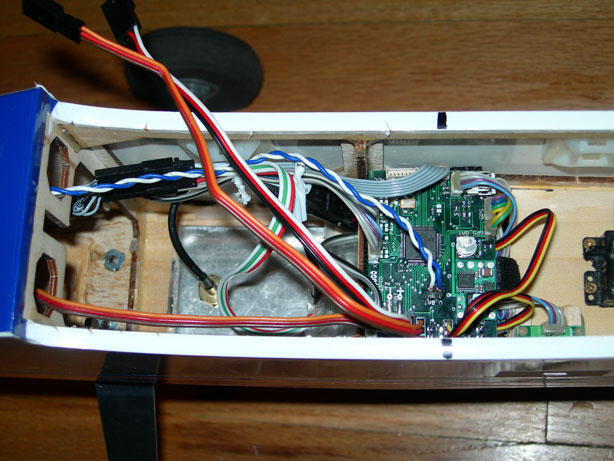User:JeffT11
Last Updated: 26-JUN-2007
About Me
Location: Ottawa, Canada
Education: Graduated 2006 with Bachelor Degree of Electrical Engineering from Carleton University
Present Employment: WiMAX hardware Designer at Nortel Networks
UAV/Autopilot Experience:
Newbie. Recently joined this project, have designed own hardware variant, and performed R/C flight testing. I anticipate Auto1 and Auto2 flight attempts in the near future.
Project Goals:
- Implement Paparazzi Hardware and Software in a fixed-wing R/C model as a testbed. Gain a better understanding
of autopilot control software programming.
- Develop a semi-autonomous Aerial Photography platform with high-level point-and-click ground station
interface.
- Experiment with inertial navigation measurement.
Contact Email: terrsterj11NOSPAM@gmail.com (remove the NOSPAM)
Project Details
Hardware
Autopilot
At the time I joined the Paparazzi project, hardware was relatively scarce so I decided to have a few PCBS fabricated (http://www.batchpcb.com) based on the AVR V1.2.2 architecture . After much difficulty with the Atmel processors (I "zombied" a few processors and burnt-out another), I designed a 4-layer PCB based on the Tiny 1.3, but adding in some features from the forthcoming Tiny 2.0. My PCB, dubbed the "Not So Tiny 1.0" is geared toward larger aircraft with seperate GPS.
The design files for this PCB are not available in the CVS yet. Please contact me if interested.
Not_So_Tiny_V1_0 Features
- 2.3" x 1.6"
- Weight: TBD
- Smallest passive is 0603
- 1.25mm Molex headers grouped by purpose with VCC and GND on each.
- Full size servo headers
- Onboard 2.25A switching regulator (PTH08000)
- Added footprints on analog channels to allow 1st/2nd order filtering, or resistor divider on input.
- Removed onboard GPS, but kept Goldcap to power GPS between power cycles.
- Onboard Mini USB connector, but kept Molex header for use with USB Fuselage Mount PCB.
Not_So_Tiny_V1_0 Assembly
Not So Tiny 1.0 requires a hotplate/oven/air to solder the crystal oscillator. All other components are hand-solderable (LPC2148 probably requires microscope). There is an error in the V1_0 schematic which requires two resistors and a wire strap on the secondary side of the PCB (see above). This error will be corrected in version 1.1 of the PCB.
Not_So_Tiny_V1_0 Testing
Not So Tiny 1.0 passes functional tests and has successfully flown under R/C control. I have not yet performed integrity measurements on the voltage rails or signals.
Not_So_Tiny_V1_0 Availability
I currently have 15 bare PCBs available. If interested please contact me by email (see About Me section). I will also consider selling some partial (LPC and crystal oscillator) or fully assembled and tested boards; however, I wish to perform further flight testing on these boards before I inflict it on the general public.
Telemetry
For two-way telemetry, I am using Aerocomm's AC4790 1W 900Mhz radio. Following the anecdotal advice of fellow paparazzi users experienced with the Aerocomm module, I used the max power register setting of the modem to reduce the output power to ~300mw (according to pg 18 of V1.3 of AC4790 User's Manual). At higher power settings, there is reported interference with analog channels, GPS, and RC. I have not attempted to reproduce this claim.
To accommodate the Aerocomm modem in my airframe, I designed a simple PCB with 3.3V LDO regulator and mating connector. The side connector breaks out Tx, Rx, 5V, 3.3V, GND and RSSI.
(Please excuse the recycled PC mother-board connectors)
Misc
A couple more widgets:
3.3V regulator designed to be small and soldered and shrink-wrapped inline with 5V power wire leading to 3.3V device. I do not yet have a use for this, but other Paparazzi users might. Please let me know if you want one.
A USB fuselage mount board. Allows Mini USB connector to be accessible from outside of the aircraft and accommodates enclosed autopilots.
Aircraft
Testbed 1
Airframe and Power System
Aircraft: Trainer EP by BlackHorse Models
Motor: AXI 2808/20
Prop: APC 8x6
Battery: 3s 11.1v 2100mah LiPo
ESC: Castle Creations PHX-35
Avionics System
Autopilot: Not So Tiny V1.0
GPS: SAM-LS
Telemetry: Aerocomm AC9700 1W 900Mhz two way modem
Sensors: FMA direct Co-Pilot attitude and Z-sensor
R/C Radio: Futaba T7CAP, Futaba DF127 receiver modded for PPM output
Servoes: 4 x HS56
